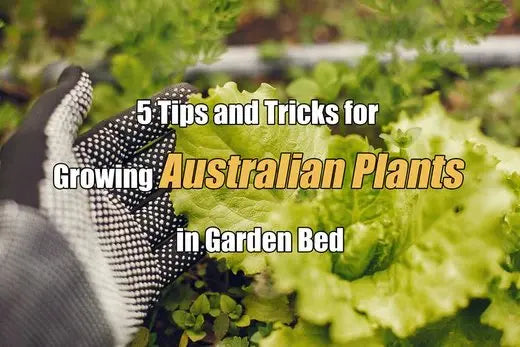A Step-by-Step Guide to Installing Your Garden Bed Irrigation System
By Emma Miller
Author bio: Emma Miller works as a senior gardening columnist, lecturer at Melbourne University and the executive editor of several gardening blogs.
In the world of gardening, where enthusiasts and experts converge, nurturing a garden is both an art and a science. For those well-versed in the nuances of horticulture, maintaining a garden's health and vitality hinges on precise watering.
Garden bed irrigation systems serve as the practical choreographers, ensuring plants receive the optimal hydration. In this comprehensive guide tailored to seasoned gardeners, we will delve into the intricacies of installing a garden bed irrigation system. With this system in place, you can guarantee your plants receive the consistent and accurate moisture they require to flourish, enhancing your gardening expertise even further.
Assessing the Unique Needs of Your Garden
Before you begin any digging or installation work it's crucial to evaluate the requirements of your garden. Every garden is unique. Factors such as the types of plants you have, the size and layout of your garden bed and the climate in your area all play roles in determining the most suitable irrigation system for your needs. By conducting this assessment you will be better equipped to make informed decisions throughout the installation process.
Selecting an Appropriate Irrigation System

Once you have gained an understanding of what your garden requires it is time to choose an irrigation system that fits best with those needs. Before everything, find professionals who can help you with everything. If you live in Australia, great plumber from Sydney can give you different options, such as:
Drip Irrigation
This system efficiently delivers water directly to the roots of your plants. It works well for gardens that have plant types with varying watering needs.
Soaker Hoses
These hoses release water evenly along their length providing a soak to the soil. They're great for gardens with rows of plants or raised beds.
Sprinklers
Sprinkler systems are suitable for garden areas as they can cover an area quickly. However they may not be as efficient due to water evaporation.
Choosing the system depends on factors like your garden layout, plant types and personal preferences.
Gathering Tools and Materials
Before starting the installation process ensure you have all the tools and materials at hand. This includes irrigation tubing, connectors, stakes, drip emitters, a pressure regulator, a timer and any other components specific to your chosen irrigation system. Having everything ready will save you time and make the installation process smoother.
Preparing the Garden Bed
Preparing your garden bed is a step in ensuring the success of your irrigation system. Lets start by clearing any debris, weeds or unwanted plants from the bed. Level the soil to create a surface. It's important to prepare the bed so that water can be evenly distributed by your irrigation system.
Laying the Main Irrigation Line
Next we need to lay down the irrigation line. This line acts as the backbone of your system transporting water from the source to parts of your garden bed. Make sure to position it along the length of the bed and use stakes or anchors to secure it in place. Keeping it taut and straight will help maintain a distribution of water.
Installing Drip Emitters
After that it's time to install drip emitters or hoses, with emitters – they are like the heart of your irrigation system. These emitters deliver water directly to each plant's roots so it's crucial to place them. Take into consideration the watering needs of each type of plant in your garden as you position these emitters.
Adjusting Water Pressure
Lastly, don't forget about adjusting water pressure. Installing a pressure regulator is essential for maintaining water pressure throughout your system. This small but vital component ensures that every plant in your garden receives the amount of water preventing overwatering or underwatering.
Testing and Troubleshooting
Before you cover your irrigation system with mulch it's important to test it for any issues and address them promptly. Turn on the system. Check for leaks, clogs or uneven water distribution. Taking care of these problems will ensure that your system functions optimally.
Mulching Your Garden Bed
Mulching plays a role in garden bed irrigation systems as it helps retain moisture, suppress weed growth and maintain a soil temperature. Apply a layer of organic mulch to raised bed while keeping it away from the emitters. This will maximize the efficiency of your irrigation system. Promote plant growth.
Regular maintenance
Regular maintenance is key to ensuring the operation of your garden bed irrigation system. Cleaning filters, replacing damaged components and adjusting the system as your garden evolves are all tasks. By staying proactive with maintenance you'll enjoy a thriving garden year after year. By the way, do you know how to remove the rust on the metal raised beds?
Benefits of Garden Bed Irrigation

Understanding the benefits of a garden bed irrigation system can further motivate you to invest time and effort into its installation. One major advantage is water conservation since these systems are highly efficient compared to watering methods.
- Growing Healthy Plants: By controlling the water delivery you can ensure your plants receive moisture reducing the risks of both underwatering and overwatering.
- Saving Time and Effort: With automated systems, you won't have to water your garden often giving you more leisure time to enjoy its beauty.
- Enhancing Plant Growth: When your plants are properly hydrated they'll. Become more vibrant adding to the allure of your garden.
Conclusion
With the step by step guide provided here you can confidently set up your irrigation system for garden beds. Once installed you'll be able to revel in the delight of a thriving garden without the burden of manual watering. Take charge of your garden's hydration today. Witness the growth with minimal effort required.
FAQs
How often should I use an irrigation system to water my garden?
The frequency of watering depends on factors such as plant species, local climate conditions and soil composition. As a rule of thumb aim for 1-2 inches of water per week. Adjust accordingly based on individual plant needs.
Can I install a garden bed irrigation system on my own?
Absolutely! With tools and clear instructions at hand installing a garden bed irrigation system can be successfully accomplished as a DIY project. This guide offers all the steps, for your convenience.
How long should I run my irrigation system each time?
The duration may vary depending on your system and garden. Generally aim for a thorough watering that takes around 20-30 minutes for gardens.
Can I use a drip irrigation system designed for garden beds on pots and containers?
Absolutely! You can modify drip irrigation systems to suit pots and containers ensuring that your potted plants receive water. Just adjust the emitters or hoses to fit their size.


